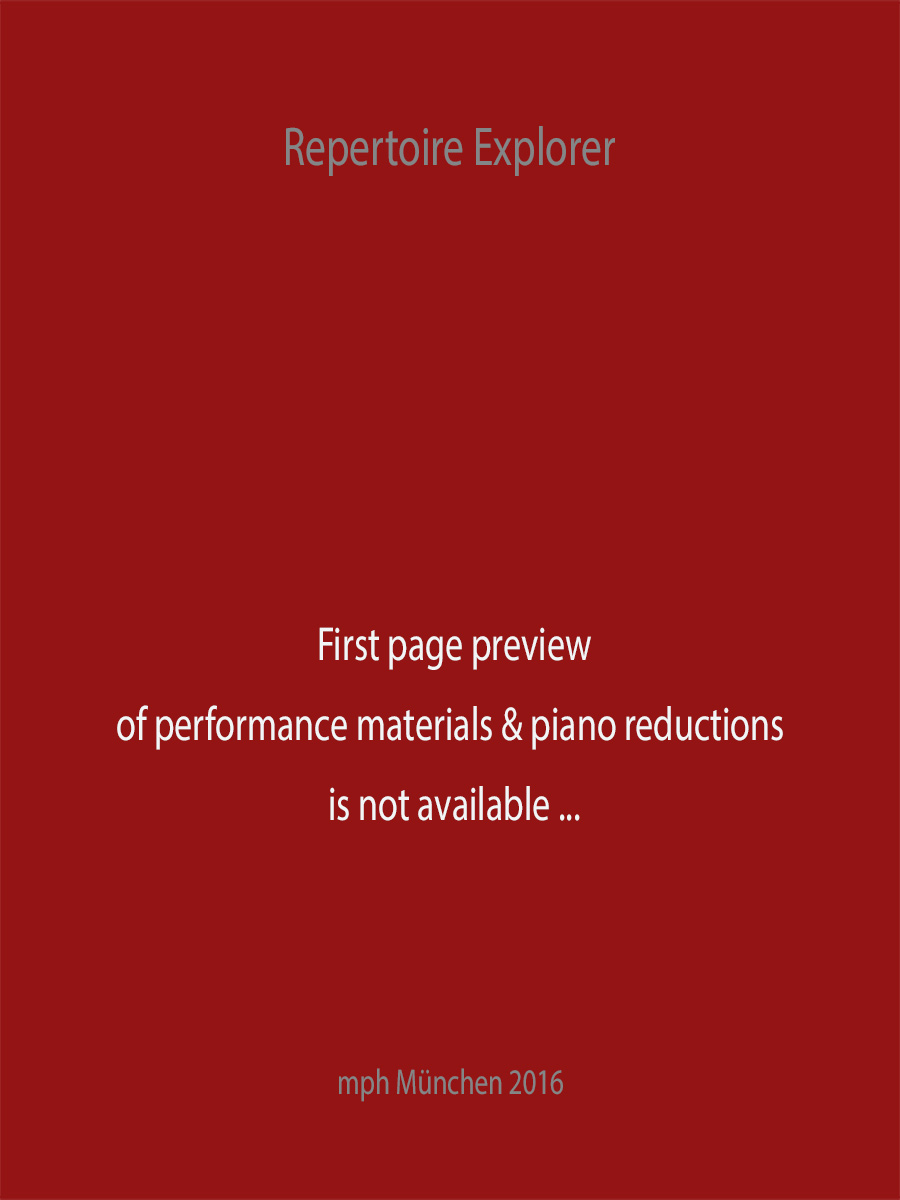String Quartet No. 2 in D minor Op. 26 (parts)
Busoni, Ferruccio
25,00 €
Preface
Ferruccio Busoni
(b. Empoli, 1 April 1866 – d. Berlin, 27 July 1924
String Quartet No. 2, op. 26 (1887)
Preface
In February 1888 Peter Tchaikovsky, then on a visit to Leipzig, excitedly wrote home to his brother Modest that he had met Grieg and his wife (“extremely interesting, origi-nal, and unusual”), conducted the Gewand-haus orchestra (“they received me not only well but enthusiastically”), and come into contact with a charming and intelligent twenty-one-year-old musician: “I was at a chamber music concert where they played a quartet by a wonderfully gifted Italian composer, Ferruccio Busoni. We very quickly became friends.” The piece was performed by the Petri Quartet, led by the concertmaster of the Gewandhaus Orchestra, Henri Petri, and it was the general consensus that a new genius had appeared on the music-historical horizon. Brahms, who had sent Busoni to Leipzig in the first place, is said to have exclaimed, “I will do for Busoni what Schumann did for me.”
Although Tchaikovsky did not exactly specify which work he heard in Leipzig, in all likelihood it was the Second String Quartet, op. 26, which Busoni had just finished composing at white heat in June 1887, and which bears a dedication to “my dear friend, Court Concert-Master Henri Petri.” The work is preceded in Busoni’s oeuvre by an impressive number of juvenilia for the same combination of instruments: String Quartets Nos. “1” to “3,” written between his tenth and fourteenth birthdays, and a host of lesser pieces for string quartet with titles such as Menuetto, Scherzo, or Alle-gretto, not to mention a Concerto in D minor for piano and string quartet, written at the tender age of eleven. All these juvenile works were later withdrawn by the composer and never reached publication. Not so the two impressive String Quartets op. 19 (1880-82) and op. 26 (1887), which were promptly published by Breitkopf & Härtel in Leipzig. Op. 26, the work reproduced in our volume, appeared in print in 1889, only one year after Tchaikovsky’s visit.
Busoni’s Second String Quartet is squarely in the Brahm-sian mould. Three of its four movements are set in triple meter, allowing the composer to indulge in the complex sub-divisions and regroupings (3/2 meter, triple vs. duple figuration, hemiolas, etc.) so favor-ed by the Brahms school. Some of its themes are clearly patterned after predecessors in Brahms’s own chamber music, although we everywhere sense that the young firebrand Busoni is straining to outdo his model. Finally, the basic texture, as one might expect from the future composer of the Fantasia Contrappuntistica, is fugato: all the themes serve, if only briefly, as fugue subjects; most are capable of functioning as counter-subjects as well; and the work culminates in a grand fugal finale clearly beholden to Brahms’s op. 88 String Quintet, composed only five years earlier. In this sense, too, Busoni’s quartet pays obeisance to the constructivist mentality of the Brahms school, though without his great forebear’s deeply ingrained penchant for nostalgic lyricism.
Read more / Mehr lesen > HERE
Score Data
| Edition | Repertoire Explorer |
|---|---|
| Genre | Kammermusik |
| Printing | Reprint |
| Specifics | Set of Parts |
| Size | 250 x 196 mm |
